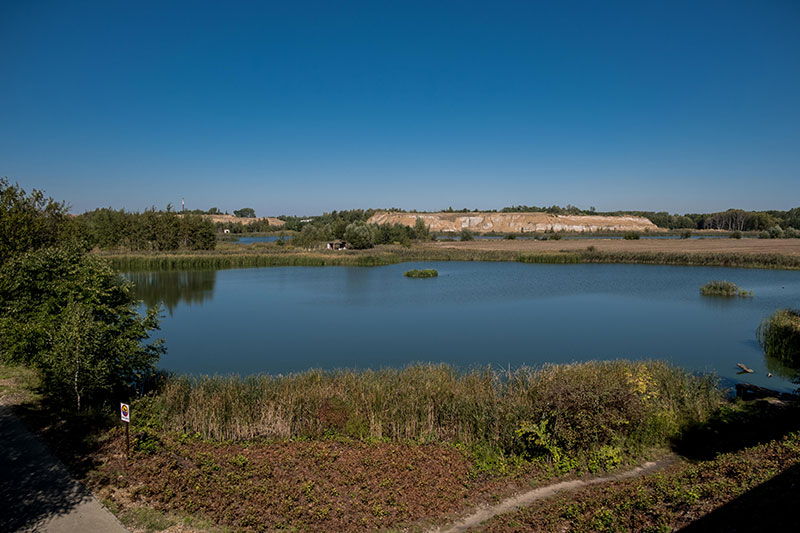Birdsong, water lapping against the rushes and wind murmuring in trees. Loosely translated as ‘Frog Pits’, Żabie Doły is an unfettered concert of the nature. Here city residents can escape the urban jungle for family walks, romantic dates, weekend recreation, or picnics. If they are lucky enough, they can see a teal, woodpecker, or even a long-eared owl. Now, thanks to European Union funding, Żabie Doły area has become more visitor-friendly.
- 30 October 2020
"Żabie Doły, often also referred to as the Silesian Lake District, is one of the greenest areas in the region. Tourists who still think of the place as an industrial area with mine shafts and chimneys, come here and cannot believe their eyes. This place is a paradise for numerous species of birds, amphibians and reptiles. It is an ideal retreat spot from the hustle and bustle of the city."
The Żabie Doły protected area spans over 226.2 hectares between the cities of Bytom, Chorzów and Piekary Slaskie, in Upper Silesia. The area is abundant in fauna and flora, and is well known for the large number of birds that thrive here.
To preserve its thriving biodiversity, this EU-funded project revitalised parts of the former coal-mining area, created conditions for preserving and encouraging biodiversity and ensured that people have better access to it for educational and recreational purposes.
Protecting diversity
To date, ornithologists have recorded 129 different bird species in the park. Several floating islands for water birds were created in many of the reservoirs. Nesting boxes for birds and bats were hung up around popular nesting spots.
Six new hides for bird watching and photography were built. These lookouts give tourists, school groups and ornithologists a good view of nesting areas, while ensuring the birds are not disturbed.
Several hundred species of insects, various mammals and amphibians thrive in Żabie Doły. To support their survival and reproduction, new ponds were built. The reeds that grow there help clean the water, which is important for the conservation of the habitats of bitterns and little bitterns – endangered birds that are members of the heron family.
Several clusters of Japanese knotweed, considered one of the world’s most invasive plants, were removed to make room for the park’s natural flora. Poplar trees that were threating the local ecosystem were felled and replaced with indigenous trees.
Making Żabie Doły more visitor-friendly
Two kilometres of new walking and cycling paths were built using a special mineral resin to ensure they blend in with the surroundings, while making them more pleasant to cycle on. Some of the existing paths were upgraded. Staircases were built to the paths that run along the railway embankments. These changes provide good opportunities for observing wildlife and channel human traffic so that animals and habitats are not disturbed.
A 62 m-long educational route for schools was laid out, with trash bins, benches and seats. Information boards inform visitors about the fauna and flora at specific points. An interactive application for mobile devices and a website were developed to supports an educational field game that can be played in Żabie Doły.
Industrial past
Coal was mined in the area until the end of the 20th century, leaving it riddled with sinkholes, retention and subsidence basins. Over time, these filled up with water, making it the bird haven it is today.
In 1997, Polish authorities declared the area protected, in part due to the rising interest of local schools which organised educational trips to the area, but also to preserve the park’s growing biodiversity.
Total investment and EU funding
Total investment for the project “Nature’s huge concert” is EUR 594 550, with the EU’s European Regional Development Fund contributing EUR 430 581 through the “Śląskie Voivodeship” Operational Programme for the 2014-2020 programming period.

